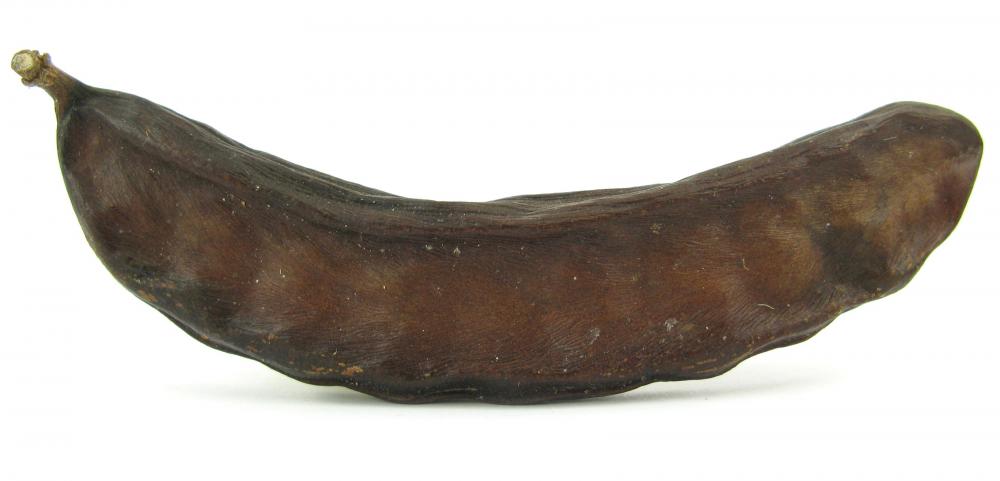At DelightedCooking, we're committed to delivering accurate, trustworthy information. Our expert-authored content is rigorously fact-checked and sourced from credible authorities. Discover how we uphold the highest standards in providing you with reliable knowledge.
What Is Lactose-Free Chocolate?
Lactose-free chocolate is chocolate that is made without milk or dairy products. Some people may choose to eat lactose-free chocolate because they enjoy the flavor of chocolate but suffer from lactose intolerance. Lactose intolerant people suffer from painful gastrointestinal problems if they consume lactose, a kind of sugar found in dairy products. Dark chocolate, semi-sweet chocolate and custom chocolate mixtures all can be found in lactose-free forms, though the same forms also can be found to contain lactose. Carob, while not technically chocolate, also may be a substitute for lactose-free chocolate.
Dark chocolate is a form of chocolate typically made without milk solids, frequently making it a viable option for many lactose-intolerant chocolate lovers. This type of chocolate contains more cocoa solids than milk chocolate does, so it tends to have a slightly bitter flavor. People who enjoy the bitter richness of dark chocolate may choose to eat a dark chocolate bar with a high percentage of cocoa solids to experience the deepest taste.

There are other lactose-free chocolate options for people who do not like the taste of dark chocolate. Custom chocolate is now available in many health food stores and specialty shops. This chocolate is made with no dairy, eggs, gluten or nuts. This replacement for typical milk chocolate is usually made from ingredients such as sugar, vanilla extract, chocolate liquor and cocoa butter. The formula for lactose-free chocolate can be used in the making of typical candy bars and treats such as ice cream.

Cocoa powder also is a lactose-free chocolate. This is not to be confused with hot cocoa mix, which often has dry milk — and, thus, lactose — added to increase the creamy texture once the mix is added to water. Unlike hot cocoa mix, cocoa powder usually is dairy-free and lactose-free, making it useful in creating chocolate cakes, chocolate icings and chocolate sauces, among other from-scratch recipes. It also can be used to make hot cocoa that is lactose-free, simply by making the cocoa with a lactose-free milk or milk substitute.

Another alternative to milk chocolate is carob. Carob bars and chips look like chocolate and have a similar taste, but they are made from the ground seeds of the carob tree. There is no lactose in carob, so it can be used as a main ingredient in a lactose-free candy bar — as long as dairy products haven't been added to the carob in processing. Carob also has a lot less acidity than chocolate, so it also can be a great snack for people who suffer from bladder issues and acidic reflux in addition to lactose intolerance.
People who are severely lactose-intolerant should read the label on all chocolate and carob products before eating them or using them in recipes. Just because one type of dark chocolate is dairy-free doesn't mean that every dark chocolate is. Also, even if the chocolate or carob in a product such as a candy bar or cookie is milk-free, the product still may contain dairy. Checking the label is the easiest way to find out.
There are different levels of severity of lactose intolerance. Some people may able to enjoy milk chocolate in small doses, while other people may be limited to strictly lactose-free chocolate because of severe symptoms that follow any lactose consumption. People who are unsure about which foods contain lactose should speak with a doctor or a nutritionist to come up with a modified diet. A trained professional can recommend low- or no-lactose alternatives to many foods, including chocolate.
AS FEATURED ON:
AS FEATURED ON:













Discussion Comments
@Chmander - Ha ha, yeah. That's my problem with chocolate too, and a lot of other sugary candies. They just melt too darn easily. Also, it's a good idea to (mainly) have chocolate during the holidays. In fact, have you noticed that it's usually associated with Christmas time? People make chocolate chip cookies, delicious hot chocolate, and piping hot brownies. Unlike the summer time, where chocolate is more vulnerable to the heat, the winter time is your chance to feast on all the chocolate you want. After all, the wintery weather sure won't get to it.
As much as I like chocolate, I generally tend to stay away from it in the summer. Unfortunately, it has to be eaten very quickly and especially in hot weather, it melts at the drop of a hat. I wish there was some alternative to this. Maybe it would be best to only have it in the winter.
Lactose-free chocolate is a great alternative to someone who's unable to ingest dairy. I'm not the biggest fan of chocolate, but I really like this option. It allows anyone to enjoy these delicious sweets without feeling left out.
Post your comments